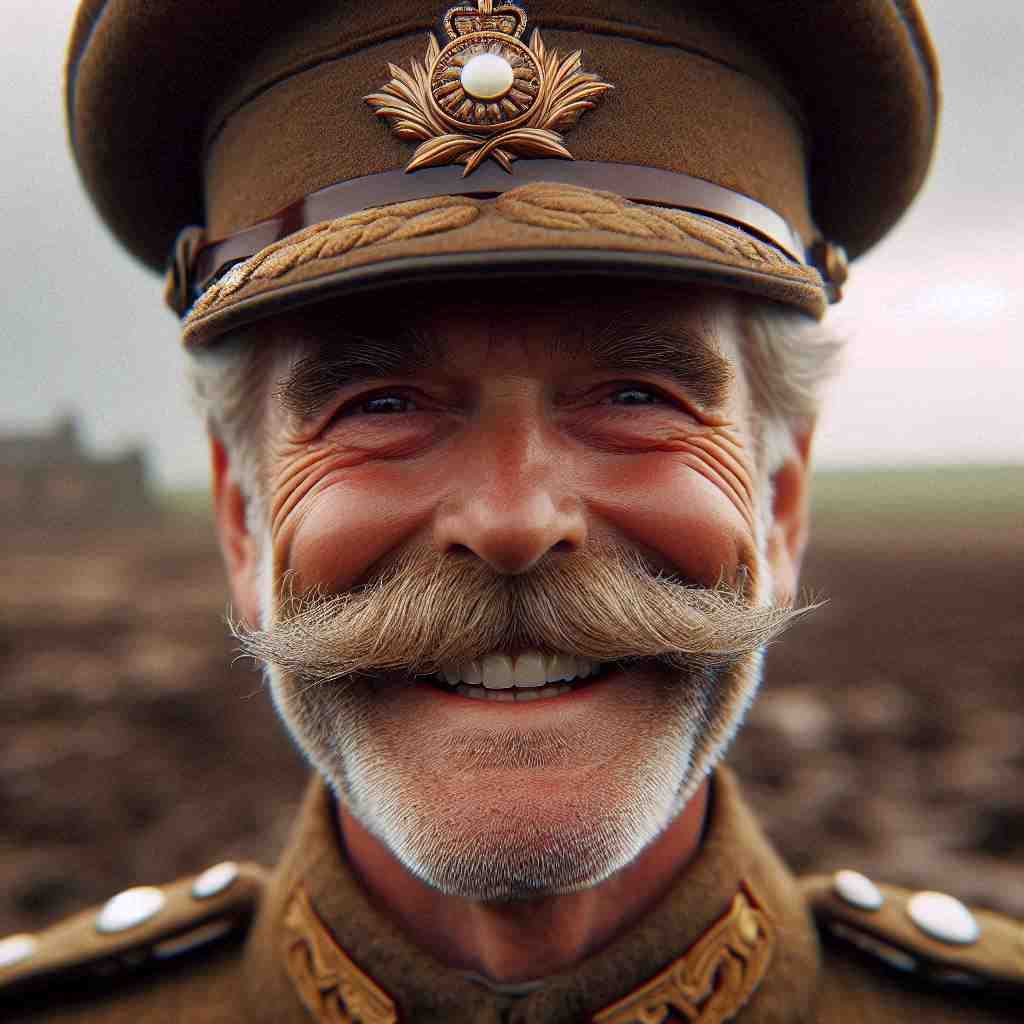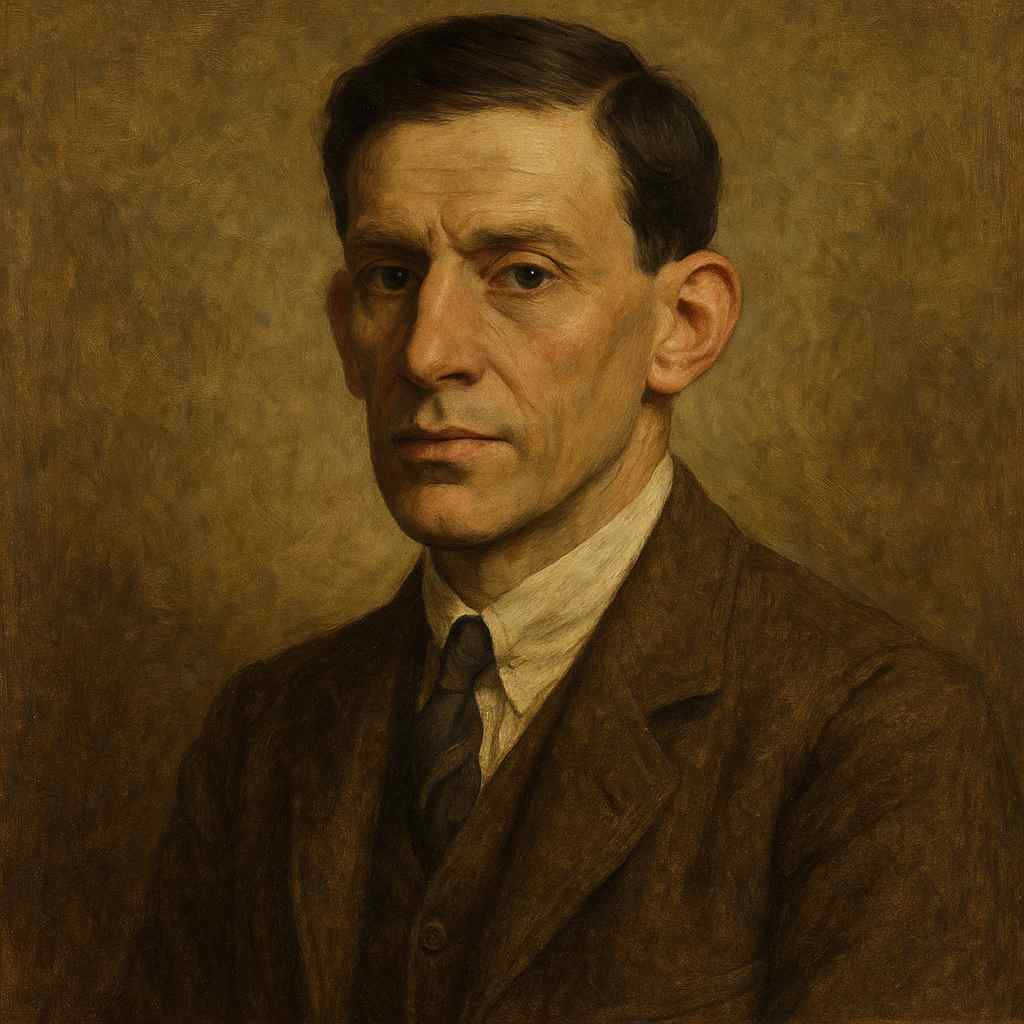The General
Siegfried Sassoon
1886 to 1967

“Good-morning, good-morning!” the General said
When we met him last week on our way to the line.
Now the soldiers he smiled at are most of 'em dead,
And we're cursing his staff for incompetent swine.
“He's a cheery old card,” grunted Harry to Jack
As they slogged up to Arras with rifle and pack.
But he did for them both by his plan of attack.
Siegfried Sassoon's The General
Introduction
Siegfried Sassoon's poem "The General" stands as a poignant critique of military leadership during World War I, encapsulating the bitter disillusionment of soldiers faced with the stark realities of warfare. Through its concise yet potent seven lines, Sassoon deftly weaves a narrative that juxtaposes the cavalier attitude of high-ranking officers with the grim fate of the men under their command. This analysis will delve into the poem's structural elements, linguistic choices, and thematic resonances, exploring how Sassoon's work serves as both a scathing indictment of war's futility and a memorial to the countless lives lost due to military incompetence.
Historical Context and Authorial Background
To fully appreciate the depth of "The General," one must first understand Sassoon's personal experiences as a soldier in the trenches of World War I. Sassoon, like many of his contemporaries, entered the war with a sense of patriotic duty, only to become disillusioned by the senseless carnage he witnessed. His transformation from a decorated war hero to an outspoken critic of the conflict informs the bitter irony that permeates this poem.
The setting of the poem, with its reference to Arras, places the action squarely within the context of the Battle of Arras in 1917. This offensive, like many others on the Western Front, resulted in massive casualties for minimal strategic gain. Sassoon's intimate knowledge of such military disasters lends authenticity to his portrayal of the disconnect between the cheerful General and the doomed soldiers.
Structure and Form
"The General" is structured as a single septet, or seven-line stanza, a form that mirrors the brevity of the encounter it describes and the swiftness with which lives are lost in war. The poem's rhyme scheme (ABABCCC) creates a sense of cohesion and momentum, driving the reader inexorably towards the grim conclusion in the final line.
The first four lines establish a clear ABAB rhyme pattern, reflecting the orderliness and formality of military hierarchy. However, the shift to a triplet in the final three lines (CCC) marks a tonal change, emphasizing the bitter reality that undercuts the superficial pleasantries of the opening exchange.
This structural choice is not merely aesthetic; it serves to underscore the poem's thematic progression from the facade of military decorum to the brutal truth of its consequences. The tight rhyme scheme also contributes to the poem's memorability, echoing the cadence of marching soldiers and the relentless march of time that brings the men closer to their fate.
Linguistic Analysis and Imagery
Sassoon's mastery of language is evident in his economic yet evocative use of words. The repetition of "Good-morning, good-morning!" in the opening line serves multiple purposes. It establishes the General's jovial demeanor, emphasizes the perfunctory nature of his interaction with the troops, and creates a sing-song quality that contrasts sharply with the gravity of the situation.
The use of colloquial language, such as "most of 'em dead" and "He's a cheery old card," grounds the poem in the soldiers' perspective. This vernacular not only lends authenticity to the soldiers' voices but also highlights the vast gulf between their experiences and the General's detached cheerfulness.
Sassoon employs vivid imagery to bring the scene to life. The phrase "slogged up to Arras with rifle and pack" evokes the physical and emotional burden carried by the soldiers. The weight of their equipment becomes a metaphor for the weight of their impending doom, known to the reader but not yet to them.
The juxtaposition of the General's smile with the soldiers' eventual fate creates a haunting irony. This smile, initially seen as a sign of camaraderie, becomes a grotesque mask in light of the destruction wrought by the General's "plan of attack."
Tone and Mood
The poem's tone undergoes a stark transformation within its brief span. It begins with an almost lighthearted, conversational tone, mimicking the General's greeting and the soldiers' casual banter. However, this quickly gives way to a mood of bitterness and resentment, evident in phrases like "cursing his staff" and the final, damning line: "But he did for them both by his plan of attack."
This shift in tone reflects the soldiers' journey from initial optimism or at least resignation, to the grim realization of their predicament. The poem's brevity intensifies this emotional arc, compressing the soldiers' experience into a few lines that mirror the often short span between a soldier's deployment and death.
Thematic Exploration
At its core, "The General" is an exploration of the theme of military incompetence and the devastating consequences it has on the lives of ordinary soldiers. Sassoon indicts not just the titular General but the entire system of military leadership that allows such disconnected figures to hold the power of life and death over their men.
The poem also touches on themes of class disparity in wartime. The General, representative of the upper-class officer corps, remains insulated from the true horrors of war, while the common soldiers bear the brunt of his decisions. This disparity is emphasized by the contrast between the General's cheery demeanor and the soldiers' eventual fate.
Furthermore, the poem explores the concept of dramatic irony. The reader, like the narrator, knows the fate that awaits Harry and Jack, while the soldiers themselves remain unaware, still capable of grunt and joke as they march to their doom. This foreknowledge imbues the poem with a sense of tragedy and futility.
Literary Devices and Techniques
Sassoon employs several literary devices to enhance the poem's impact. The use of personification in describing the General's plan as something that actively "did for them both" assigns agency and culpability to the abstract concept of military strategy, emphasizing the direct link between command decisions and soldiers' deaths.
Understatement plays a crucial role in the poem's effectiveness. The casual mention of the soldiers being "most of 'em dead" and the matter-of-fact final line deliver the horror of war with a chilling nonchalance that reflects the numbing effect of constant exposure to death.
The poem also makes use of synecdoche, with the General standing in for the entire military command structure. This allows Sassoon to critique the broader system of warfare through the lens of a single, emblematic figure.
Comparative Analysis
"The General" can be productively compared with other World War I poetry, such as Wilfred Owen's "Dulce et Decorum Est" or Rupert Brooke's "The Soldier." While Owen's work shares Sassoon's graphic realism and anti-war sentiment, Brooke's early war poetry presents a stark contrast in its patriotic idealism. Sassoon's poem occupies a middle ground, using irony and understatement rather than graphic imagery to convey its message.
In the broader context of war literature, "The General" anticipates works like Joseph Heller's "Catch-22" in its use of dark humor to critique military absurdity. The poem's brevity and punch can also be seen as a precursor to the style of modern war reportage, distilling complex situations into powerful, memorable vignettes.
Legacy and Relevance
More than a century after its composition, "The General" remains deeply relevant. Its critique of military leadership and the disconnect between those who make decisions and those who must live (or die) with the consequences resonates beyond its specific historical context. The poem serves as a timeless reminder of the human cost of war and the dangers of detached leadership in any field where lives are at stake.
In an era where military conflicts continue to shape global politics, Sassoon's words offer a sobering perspective on the personal tragedies that lie behind casualty statistics. The poem's enduring power lies in its ability to humanize the soldiers while simultaneously condemning the systems that fail them.
Conclusion
Siegfried Sassoon's "The General" stands as a masterpiece of concision and impact in war poetry. Through its carefully crafted structure, evocative language, and biting irony, the poem delivers a powerful indictment of military leadership and the futility of war. By contrasting the General's cheerful ignorance with the soldiers' grim fate, Sassoon creates a microcosm of the larger tragedy of World War I.
The poem's enduring relevance speaks to its universal themes and the timeless nature of its critique. As long as there are wars fought and lives lost due to the decisions of distant leaders, "The General" will continue to resonate with readers, serving both as a poignant memorial to fallen soldiers and a stark warning against the dangers of disconnected leadership in matters of life and death.
In just seven lines, Sassoon captures the essence of war's tragedy, the gulf between classes, and the bitter irony of mortality. "The General" remains a testament to the power of poetry to distill complex historical and emotional truths into a form that continues to move and provoke readers more than a century after its creation.
This text was generated by AI and is for reference only. Learn more
Want to join the discussion? Reopen or create a unique username to comment. No personal details required!



Comments
No comments yet. Be the first to comment!